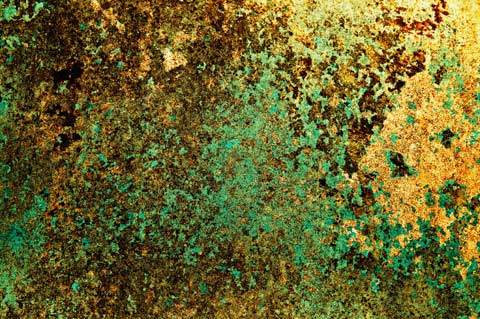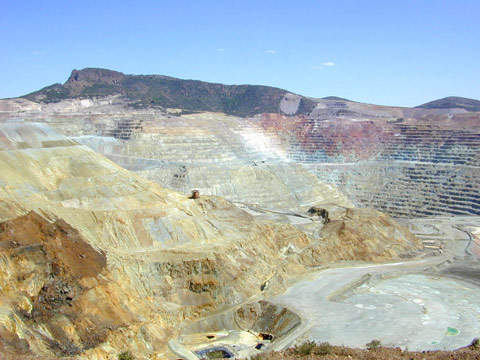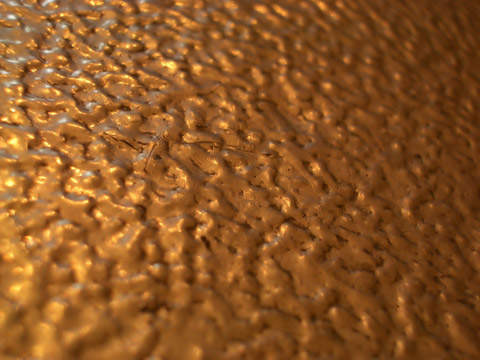Lone Mountain is a porphyry copper deposit owned by Copper One located in New Mexico near Silver City. The mine is located in a district that hosts two open-pit copper mines: Santa Rita-Chino and Tyrone. Copper One began drilling operations at the mine in January 2010.
Reserves
The property occupies 1,530 acres and has a reserve base between 110Mt and 160Mt. According to available drill data, the reserves are graded between 0.20% and 0.29% Cu.
Geology
The Lone Mountain deposit lies beneath a stratigraphic package of clastic and calcareous sedimentary rock. The rocks are Pleistocene to Cambrian-Ordovician in age.
Carbonate and clastic sedimentary rocks that gradually plunge north-east lie on the south-west limb of a north-west curving synclinorium. A Laramide intrusive suite belonging to the Cretaceous-Tertiary age intrudes the sedimentary package. Small satellite stock and associated phases of sills and dikes, sometimes occurring as swarms, are also present in the complex.
The intrusive rocks present in the prospect are composed of quartz monzonitic-granodioritic-latite. Many rocks are either quartz textured and/or feldspar porphyritic textured.
Mineralisation
Mineralisation in the lone deposit includes copper porphyry, polymetallic skarns and a large copper oxide-carbonate-sulfide blanket that lies near the surface. Created by the Laramide intrusive suite, the three distinct mineralisation styles in the deposit are similar to the sedimentary and intrusive geology of Santa Rita-Chino and Tyrone. The copper oxide-carbonate-sulfide mineralisation begins about 60m below surface and extends to a depth of 250m. It is marked by 21 drill holes and
is graded at up to 0.9% in 50ft intervals. Copper mineralisation in the zone consists of malachite, azurite, chrysocolla, chalcocite, and copper and manganese oxides.
Lone mountain stock, and its related dikes and sills, host a weak, disseminated and fissure vein-let pyrite-chalcopyrite porphyry style mineralisation. The mineralisation is graded between 0.05% and 0.10% Cu. Molybdenite is also found at 50ft zones and averages more than 200ppm Mo.
Several calcareous sedimentary rocks hosts high-grade polymetallic high-grade Cu-Zn-Pb-Ag-Au exoskarn minerals close to its contact with the Lone Mountain intrusive complex. Copper grades in the skarn bodies are more than 7% copper with 0.7ppm gold and 116ppm silver. The skarn minerals are found within the upper Paleozoic Lake Valley Formation between a depth of 1,500ft and 1,950ft below the surface. At depths between 2,500 and 3,600ft, the copper-magnetite magnesian skarns lie within the Lower Paleozoic dolomites.
Mining
The deposit underwent extensive drilling by several mining companies between 1975 and 2007. By 2007, approximately 41 holes, totalling 75,511ft, had been drilled. Significant zones of copper and zinc were discovered at depths below an overlying zone of oxide copper. As technology to process low grade oxide copper mineralisation was not available, the copper oxide mineralisation was targeted at that time.
In January 2009, phase one of a reverse circulation drill programme was completed to test the thickness and depth of the near-surface copper oxide zone further. Seven holes totalling 5,873ft were drilled resulting in attaining valuable geological data.
Depending upon the characteristics of leach, the oxide part of the porphyry copper complex demonstrated a cut off grade from 0.04% to 0.10%. A recently completed bottle roll test work also revealed superior leach characteristics of the project.
Further drilling at the prospect began in January 2010. A reverse circulation drilling programme will target 60 holes, spaced 75m and totalling between 12,000m and 25,000m. Deeper skarn targets will be tested through 25% of the core holes. After completion of drilling in 2010, the total resource figure will be calculated.






